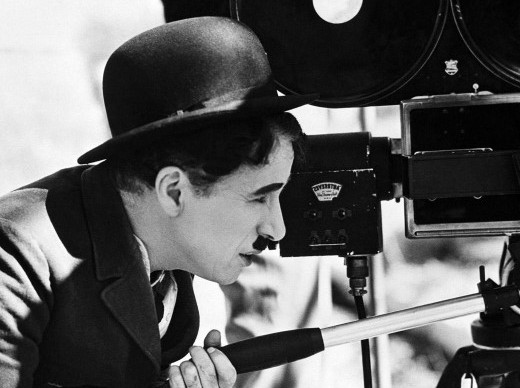6 Ways to Manipulate Time in Fiction
Today’s guest post is by Martin Cavannagh.
One of the least analyzed literary devices in literature is time.
Time works differently in books. It ceases to be the tyrannical presence that we know in real life and instead becomes a simple tool that the writer manipulates to tell her story. Every great story puts time to work for it on some level—many times, in a way that’s deft and creative.
Okay, so what’s the literary equivalent of Notting Hill’s famous “Walk through the Seasons” sequence in Notting Hill, you might ask? Well, authors have their own tricks up their sleeves when it comes to controlling time. Let’s take a look at them now.
Here are six ways that writers work around the clock to tame time in their stories.
1. Time Markers
In a linear narrative, the author is obligated to move in a single direction when it comes to time: straightforward. However, that doesn’t mean that writers have to make time plod on. Imagine how boring it would be for readers if you described every second of every minute of your characters’ lives. They would drop like flies by the tenth second.
To address this, writers manipulate the passage of time.
Let’s take a look at Jane Austen’s Pride and Prejudice, which covers several weeks in one fell swoop while ably telling readers what happened during them:
Day after day passed away without bringing any other tidings of him than the report which shortly prevailed in Meryton of his coming no more to Netherfield the whole winter; a report which highly incensed Mrs. Bennet, and which she never failed to contradict as a most scandalous falsehood.
Here’s another example from To Kill a Mockingbird, which summarizes an entire summer in one sentence:
Dill blushed and Jem told me to hush, a sure sign that Dill had been studied and found acceptable. Thereafter the summer passed in routine contentment.
Learning when to speed up time in a story is part of the making of a great book. But that goes into a separate topic altogether—one about the art of pacing—so we’ll instead point you to this excellent article to find out more about it.
2. Multiple Timelines
If one timeline isn’t enough to satiate your writing skills, how about two? Or four?
The concept of “multiple timelines” isn’t so much of a manipulation of time as it is a different way of representing time. Generally, writers turn to this technique to do one of the following:
- Depict and develop the backstory of a character
- Build up a subplot that will tie into the main plot later
Louis Sachar’s Holes, for instance, details the lives of Stanley Yelnats IV in the current day and of the infamous outlaw Kissin’ Kate Barlow—one hundred and ten years ago. In this case, the technique is essential to the book’s success: the reader needs to experience the latter’s timeline in order to truly understand the former’s predicament.
A word of advice: if you’re taking this approach, treat all timelines equally. You’ll want to make sure that both are interesting so that readers don’t flip the page and groan when they see that it’s the “boring” timeline.
3. Flashback
Ah, the good old flashback. When you think of them nowadays, your thoughts might instantly “flash back” to some of the cut scenes in Quentin Tarantino’s films. But what you might not know is that authors were using this narrative technique to pull the threads of time far before movie directors.
One of the earliest examples crops up in The Odyssey, in which Odysseus narrates the tale of his adventures in a series of flashbacks. Fast-forward to the present, and its purpose is largely similar: it’s a popular device that authors use primarily to build backstory for the protagonist. Flashbacks are a way for writers to answer: What happened? and How did this character become this way?
That’s why it’s probably not surprising that they appear most often in memoirs, in which the author relives past decisions from a present-day perspective. That said, it’s a widespread time-travel technique that you’ll find in almost every genre, which makes it a trusty tool to keep in your writer’s toolbox.
4. Reverse Chronology
What’s a story told chronologically to an intrepid author? A big yawn.
That’s why you’ll sometimes see a story that’s told backwards. This is an interesting nonlinear technique that lets authors directly use time as a structural device.
Consider Sarah Waters’s The Night Watch, which is set in war-torn London in the 1940s. It moves in reverse chronology in a few stages, “beginning” in 1947 and “ending” in 1941. But as Waters slowly but surely rewinds the clock, the reader is made aware of more and more of the secrets that lie deeply hidden in the characters’ web of deception.
As you might expect, structuring a novel this way forces readers to contemplate the why and how—not necessarily the what of the story. In many ways, the reverse chronology becomes an exciting puzzle that the audience must piece together.
Though this technique isn’t very popular—in part because it’s such a tricky juggling act for the author to assemble in the first place—it is starting to gain a bit more momentum in the literary world. And it’s about time, I’d say.
5. Chapter Length
Ready for some good news? The concept of the “chapter” isn’t some arbitrary construct that the ancient rule-makers of fiction dreamed up to torture authors. In fact, it’s a very useful instrument in your writing toolbox, and the acceleration (or deceleration) of time is one of the effects that it can impress upon the reader.
The trick is in the word count. To quicken the pace of a book (and make time whip by for the reader), fiction writers can make their chapters shorter. Likewise, stretching out the chapter will make readers feel as though time has slowed to a crawl.
As you might expect, many a canny author has used chapter lengths to their advantage. I always like to point to the twelve chapters of Man Booker Prize–winning Luminaries. Eleanor Catton, the author, purposefully decreases each successive chapter’s word count to mimic the waning of the moon: the first chapter is a massive 360 pages, while its last chapter is a mere two pages. The effect of this masterful planning is one that readers feel as a visceral punch to the gut as they near the book’s end: that time is steadily growing short for every character involved in the book’s plot.
6. Groundhog Day
Stop me (or the clock) if this thought has crossed your mind before: What if time didn’t exist anymore?
It might be a fruitless wish in real life, but an authors is no average person—he can manipulate time to actually bring it to a screeching halt.
Exhibit A: science fiction, in which cases of wacky physics are popular in plenty of books and short stories. (“The New Accelerator” by H. G. Wells and Ben Elton’s Time and Time Again spring immediately to mind). But I’m not just talking about books in which time stops in the context of the story. I’m also thinking of instances when the author truly rewinds the clock for the reader.
Joan Didion’s Year of Magical Thinking is a great example of this. In this memoir, Didion revisits just one event—the death of her husband, John Dunne—over and over again. For a span of 227 pages, she succeeds in doing the impossible: she makes time briefly stop, right there on the page.
How do you manipulate time in your books? Do you think about time differently when you write? Leave your thoughts in the comments below.
 Martin Cavannagh is a writer for Reedsy an online marketplace that connects authors and publishers with the world’s best editors, designers, and marketers. When he’s not writing fiction, he works to educate authors by curating a series of free online courses and live webinars. Follow him on Twitter.
Martin Cavannagh is a writer for Reedsy an online marketplace that connects authors and publishers with the world’s best editors, designers, and marketers. When he’s not writing fiction, he works to educate authors by curating a series of free online courses and live webinars. Follow him on Twitter.
 Want my free ebook Manipulate the Clock: How Fiction Writers Can Tweak the Perception of Time? Click HERE to join my mailing list and get this ebook—and Writing the Heart of Your Story—free the week you sign up!
Want my free ebook Manipulate the Clock: How Fiction Writers Can Tweak the Perception of Time? Click HERE to join my mailing list and get this ebook—and Writing the Heart of Your Story—free the week you sign up!












Thanks for another very useful post.
I’ve just read Julie Cohen’s “Together” which is told in reverse order, and it’s one of the most powerful, emotionally charged and thought provoking books I’ve ever met. Have a look at my review on Amazon for more details.
As an SF writer I tend to use flashbacks to explain little details in my characters’ histories. For example there is one scene where Jane has just pulled off a stunt with a spaceship that has got her to an emergency call fifteen minutes earlier at the expense of being thrown around violently. She seems quite unaffected by the incident:
Back home at Hallsfield Farm on Mercia, there was a lake. One winter it had frozen over. She’d tried to scramble down the bank for a closer look at this rare thing called ice, tumbled and ended up skidding yards out onto the frozen surface, flat on her back, kicking helplessly. Her brother Tom, white with fear at her screams, had started to climb down to her but she’d already made her way back on hands and knees.
She’d asked him if she could do it again, please. Only, this time, could she do it the other way up, so that she could see where she was going?
He’d lifted her, blank incomprehension on his face—not understanding how, in that moment, his little sister had begun to tread the path that would take her to the pilot’s seat.
I like your comment about chapter length. I’ve done the same thing with sentence length, short and quickfire for action then long and slow for the cold, dark place afterwards when everything has gone wrong.
Alan’s eyelids began to flutter, ‘What happen…?’
‘Alan, listen to me, you’ve been shot. You’ve got the projectile inside you, it’s explosive and the fuse is running. I’m going to operate and get it out.’
Alan’s eyes slowly fixed on her. ‘Explosive? Leave me—get yourself clear.’
‘No way.’
(Skip a bit)
There was a dull crack. Alan twitched slightly and then his face creased with pain.
‘The bloody thing’s gone off!’ said Morris, ‘Not your fault, that was the timer running out, seen it before. I’m sorry, that’s it, there’s absolutely nothing more we can do. I’ll let you say goodbye.’ He disconnected from starline.
Alan looked at her, his lips moving as he tried to form words. Then for a moment he seemed to be at peace. ‘Green and gold,’ he whispered.
Jane laid her cheek to his. ‘I know. I found the ring. I’m sorry.’ No, sorry wasn’t enough. ‘I’m utterly ashamed of what I said to you. What I did was wicked.’
There must be something she could do, some way she could stop this, drag him back to life so that she could put everything right, unsay what she’d said, give him all the things he’d dreamed about.
But there was nothing, and at twenty-five minutes past midnight, on a cold, wet morning, while Jane knelt beside him on the bloodstained deck plates of her ship, Alan slipped from her and died.
Another helpful article – thank you C. S. Lakin!